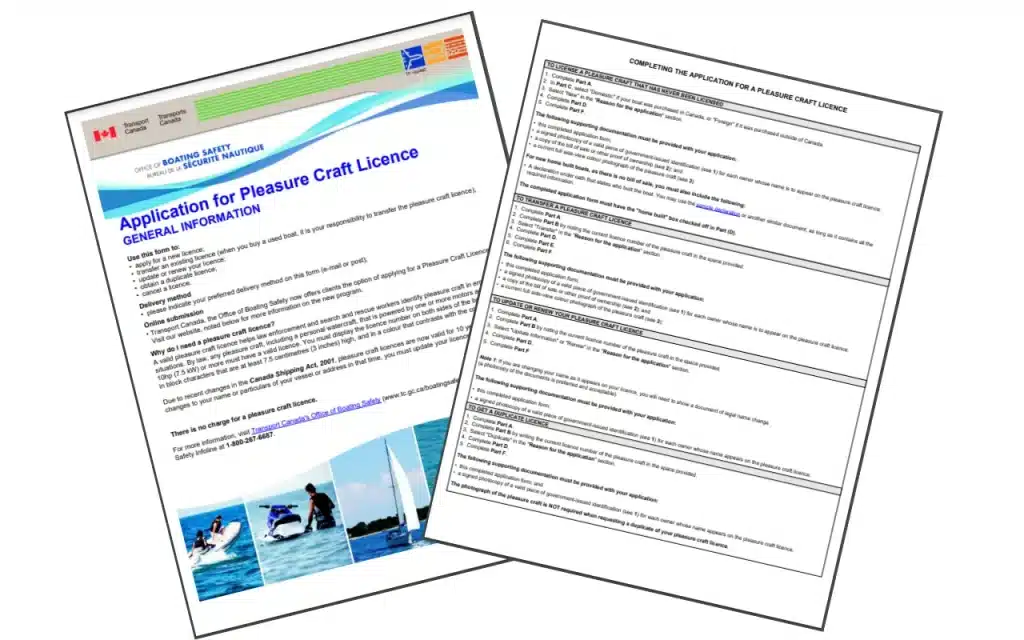Home / Boating Safety Manual / Rendering Assistance to Other Boaters: Canadian Requirements
10% OFF WITH CODE:
BLACKFRIDAY10
On Canada’s vast waterways, other recreational boaters are often closer and able to respond more quickly to a vessel in distress than search and rescue personnel. That’s why the Canada Shipping Act 2001 states that vessel operators are legally required to assist other boaters in distress.
Key takeaways
- Canadian boaters have a legal obligation under the Canada Shipping Act to render aid to vessels in distress, provided it does not pose a serious danger to their own safety. Failure to do so can result in serious legal penalties.
- You are released from this duty if rendering aid is dangerous to you, or if professional help (like the Coast Guard) or other vessels are already on the scene.
Table of contents
- Obligation to render aid: understanding the Canada Shipping Act
- Exceptions
- Your responsibility in the event of a collision with another boater
- Frequently Asked Questions
Obligation to render aid: understanding the Canada Shipping Act
When boating in Canada, you are obliged to respond to distress signals (via VHF marine radio, a distress flare or similar) and offer what help you can in the event of an emergency on the water.
If you receive an order from search and rescue to go to someone’s aid, you are required to proceed to the site of the emergency and render assistance in any way you can.
Exceptions
A vessel operator is exempt from this obligation if:
- They deem it impossible, unreasonable or unnecessary to render assistance, in which case they must note their reasoning in detail in their vessel’s logbook. However, they should still immediately inform the Search and Rescue authorities (like the Canadian Coast Guard) that help is needed;
- They learn that another vessel is already rendering assistance to those in distress;
- They are informed that assistance is no longer necessary.
Your responsibility in the event of a collision with another boater
In the event of a boat collision, those in charge of each vessel must:
- Help the other vessel to save those aboard from any dangers resulting from the collision, as long as doing so will not endanger their own vessel;
- Stay with the other vessel until its operator has determined that they no longer require assistance;
- Exchange vessel names, operator and owner names and addresses.
Get your boating licence with Drive A Boat Canada!
We offer a comprehensive online course leading to lifetime certification. Register with Drive a Boat Canada today, and learn everything you need to know to pass the boating exam. With your boating licence (PCOC), you can take to the water legally anywhere in the country.
Frequently Asked Questions
Yes. Under the Canada Shipping Act a boat operator must stop and render assistance to any person or vessel in distress, insofar as they can do so without serious danger to their own vessel or the persons on board.
Failing to stop and render assistance to a person in danger of being lost can be a serious offence. Under the Criminal Code of Canada, an operator who fails to stop and offer assistance when their vessel is involved in an accident, or fails to respond to a distress signal, can be guilty of an indictable offense and liable to imprisonment.
You are not obliged to help if it will put you in danger (though you should still contact a rescue service), someone else is already helping, or the person in distress has indicated they no longer need help.
There are four things you should do when approaching a vessel in distress:
- Assess the danger: Determine if it is a life-threatening “Distress” (Mayday) situation (e.g., sinking, fire, medical emergency) or a “Disabled” situation (e.g., engine trouble, out of fuel).
- Establish communication: Use your VHF radio (Channel 16, then switch to a working channel) or a cell phone to talk to the other operator.
- Confirm the problem and location.
Do not rush in: Approach slowly, mindful of your own vessel’s limitations, water depth, and the risk of creating a wake.
Generally, no, unless the situation is critical and lives are at risk. Towing a disabled vessel comes with significant risks, including straining your boat’s structure and risk of damage to the other boat.
It is generally recommended to stand by the disabled vessel until professional commercial towing services or the Canadian Coast Guard arrive, or offer to ferry passengers to safety if required.
Canadian maritime law provides a degree of protection, often referred to as the “Good Samaritan” principle. You are generally protected from liability for damage or injury caused while rendering assistance, provided you act as any prudent and qualified boater would under the circumstances, without gross negligence or recklessness. In other words, it is not considered an offense if you make an honest mistake while trying to help.
- VHF Marine Radio: Use Channel 16 (distress and calling).
- Cell Phone: Dial *16 (a dedicated Marine Assistance line in many areas) or 911.
- Digital Selective Calling (DSC): Use the dedicated distress button on your VHF radio.
Be ready to provide the maximum possible information to the authorities, including:
- Vessel name and type
- Exact location (latitude/longitude is best, or known landmarks)
- Nature of the distress (e.g., fire, sinking, medical emergency)
- Number of persons on board
- Description of the vessel’s status (e.g., taking on water, unanchored, on fire)
- Weather and water conditions
Sources
- Government of Canada Small Vessel Regulations. Department of Justice. https://laws-lois.justice.gc.ca/eng/regulations/sor-2010-91/
- Government of Canada Canada Shipping Act, 2001 (S.C. 2001, c. 26). Department of Justice. https://laws-lois.justice.gc.ca/eng/acts/C-10.15/section-131.html
- Government of Canada Contact Canadian Coast Guard. Canadian Coast Guard https://www.ccg-gcc.gc.ca/contact/index-eng.html#emergency
- Government of Canada Radio Aids to Marine Navigation 2025. Radio Aids Marine Navigation (RAMN) https://www.ccg-gcc.gc.ca/publications/mcts-sctm/ramn-arnm/part4-eng.html
Last articles



